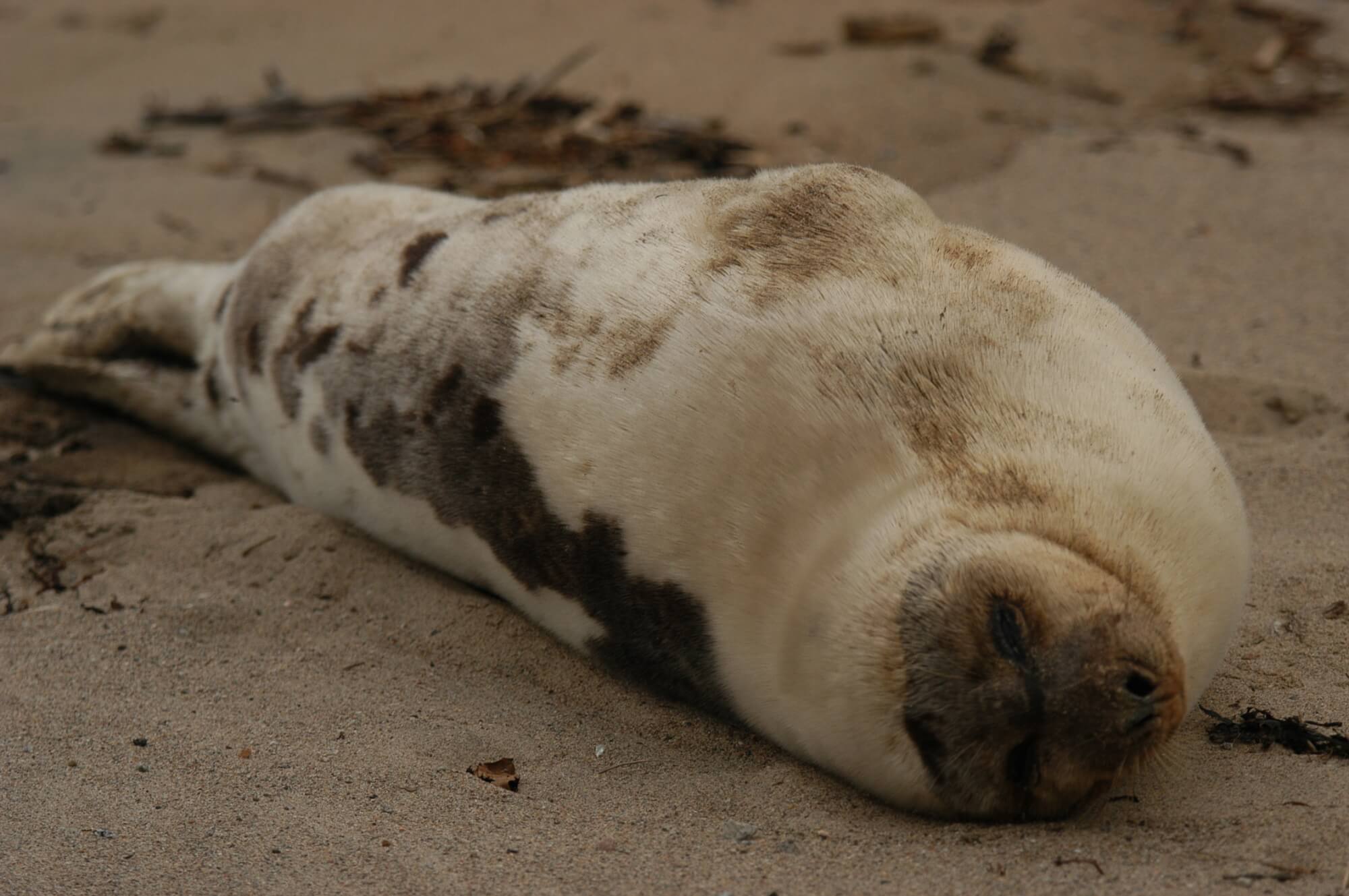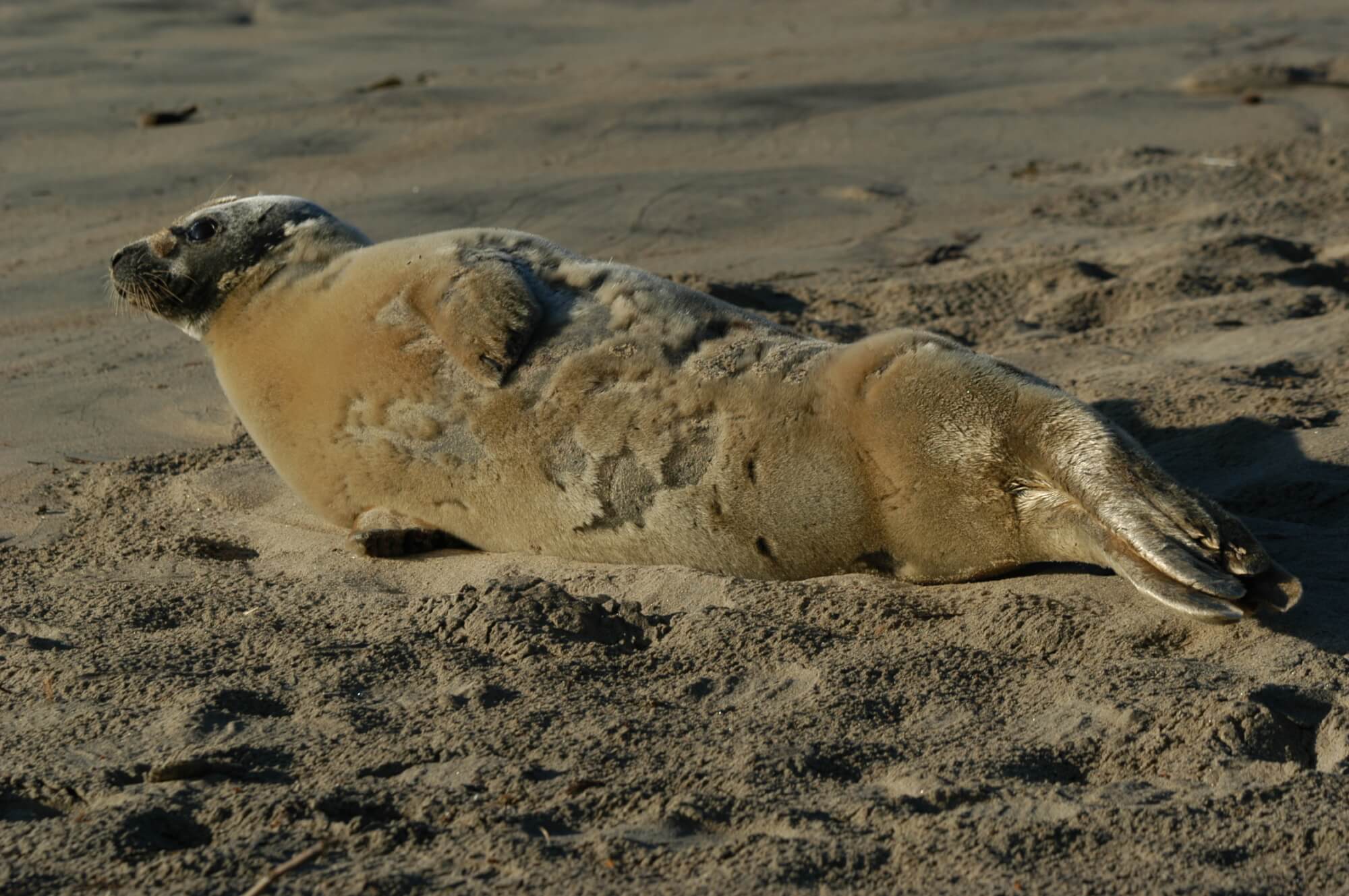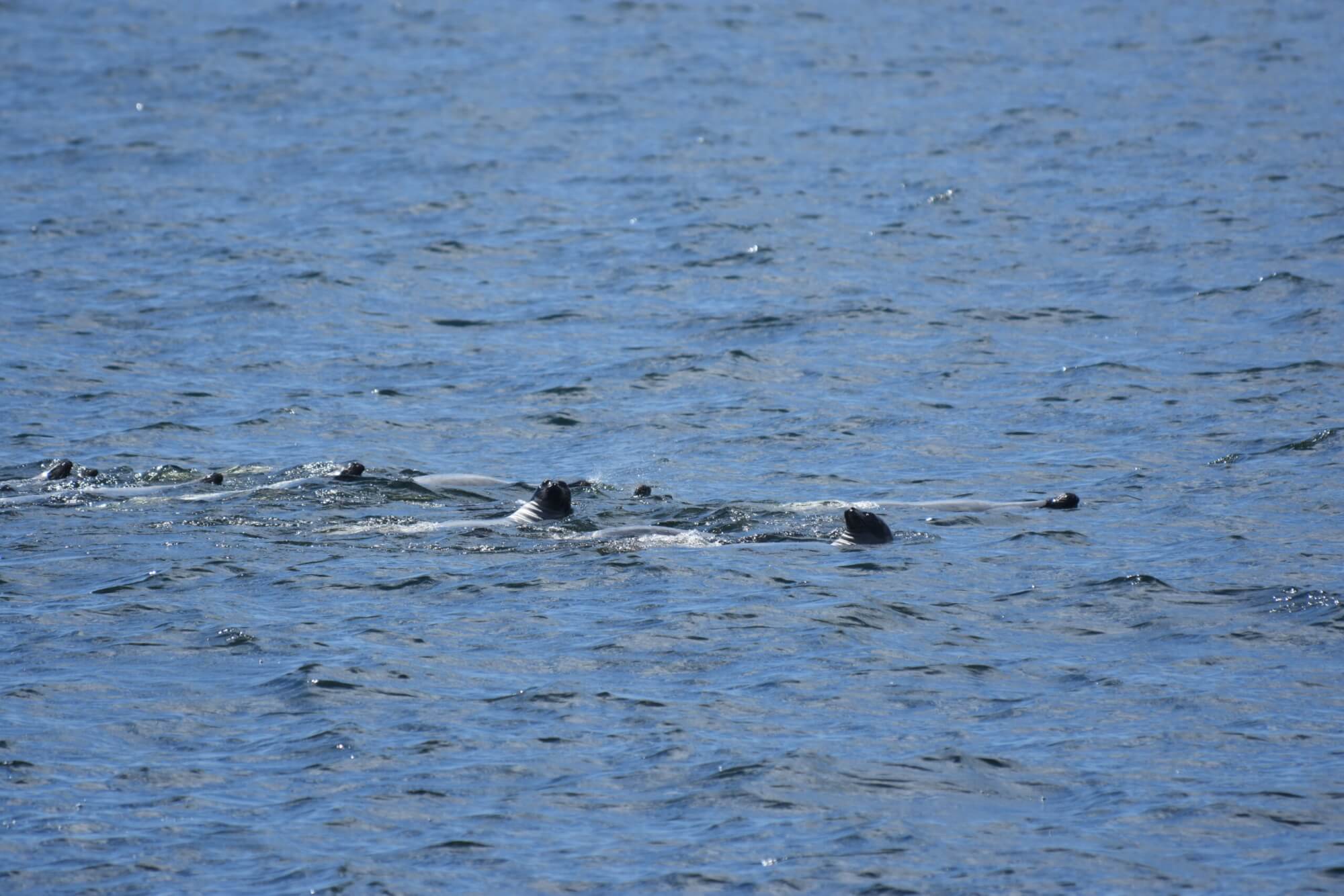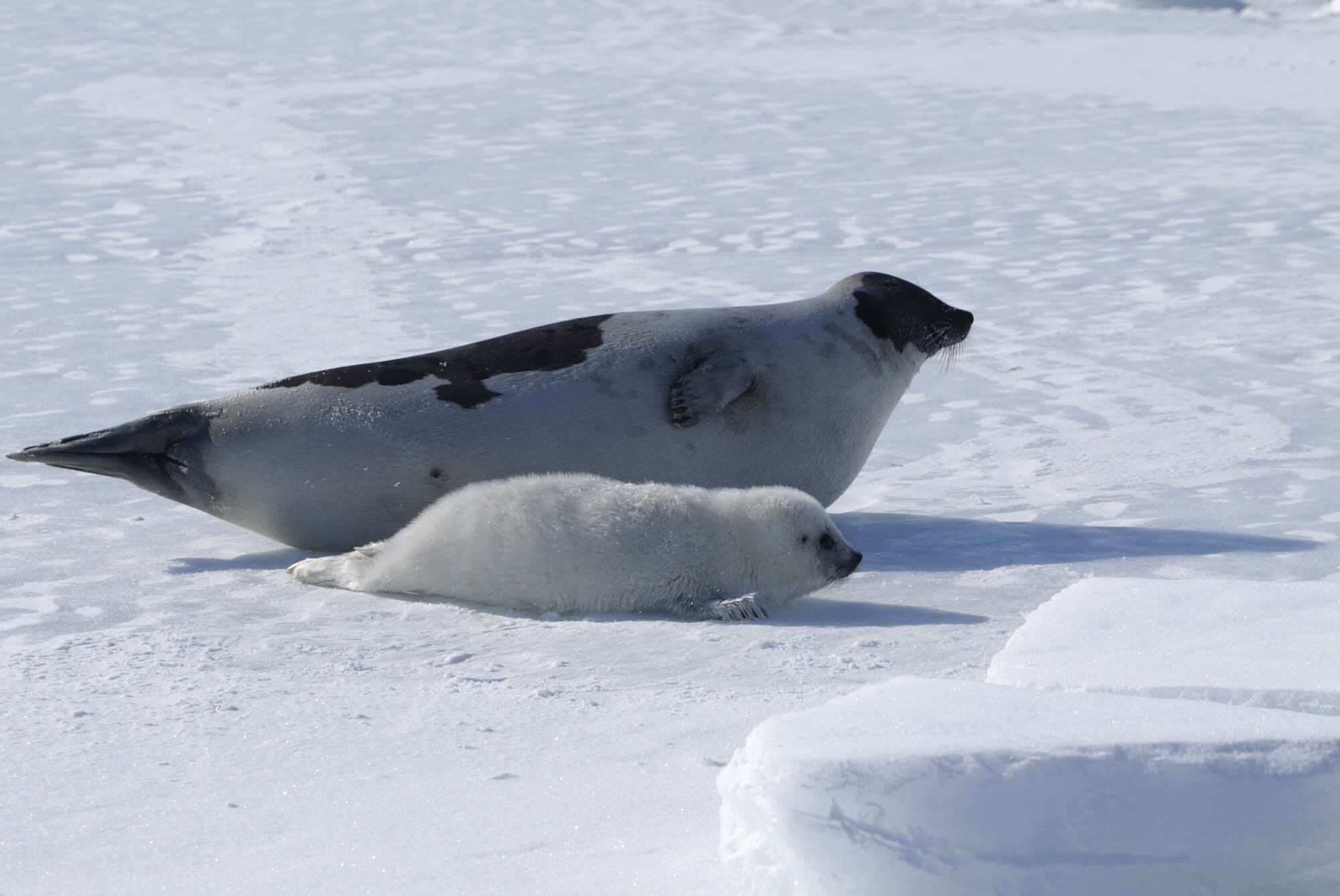Feeding
Harp seals are opportunistic predators that hunt for their prey in groups. They feed mainly on fish as well as invertebrates. Analyses of their stomach contents have revealed that they consume a very wide range of species, with 70 species of invertebrates and 67 species of fish having been identified. However, their diet consists mainly of a limited number of species, namely molluscs (squid), crustaceans (shrimp and krill) and fish such as plaice, arctic and Atlantic cod, bullhead, redfish, halibut, capelin, herring and other flatfish.
On the surface
The harp seal is believed to be the only pinniped to regularly swim on its back. Although scientists do not know the reason for this behaviour, they have raised several hypotheses. The eyes of this species are positioned near the top of its head. When swimming in this position, the animals find themselves completely under water, which allows them to better see the waters below and spot prey, predators or any other source of threat or disturbance. However, scanning the depths does not allow the seal to spot land-roaming predators such as the polar bear.
Diving
The harp seal spends much more time swimming and diving than it does on land. Despite being a very agile swimmer, it is probably only a mediocre diver, averaging depths of 400 metres and dive times of approximately 16 minutes. Compared to other seal species, its dives range from shallow to moderately deep. Researchers have observed that in some populations, dive times vary as a function of location, season, and time of day.
Social
Harp seals are highly gregarious, congregating by the thousands on the ice floes for pupping, reproduction and moulting. They also hunt in groups, but these gatherings are not as massive. On the pack ice, multiple animals use the same hole to enter and exit the water, thereby preventing it from freezing shut. The only animals that sometimes live alone are the older bulls. This species spends most of its time in the water and has a unique habit of swimming on its back. On the ice, these seals can be observed lying on their sides or on their bellies.
Vocalization
Scientists have identified 17 different sounds produced by harp seals when they are under water. They have also been known to bark when out of the water.







